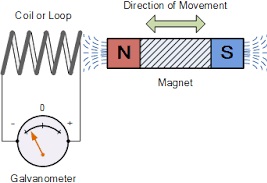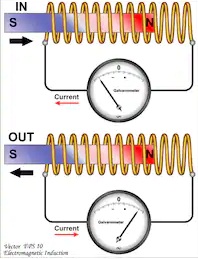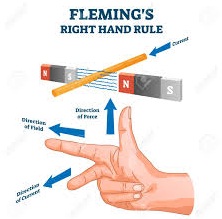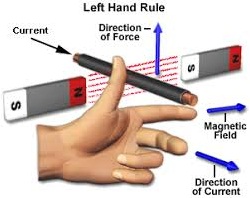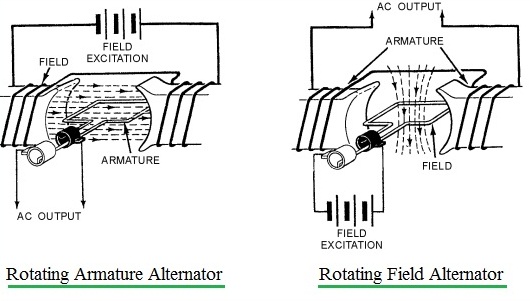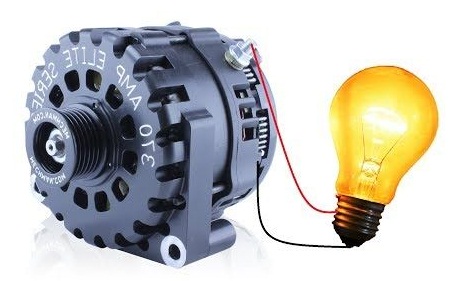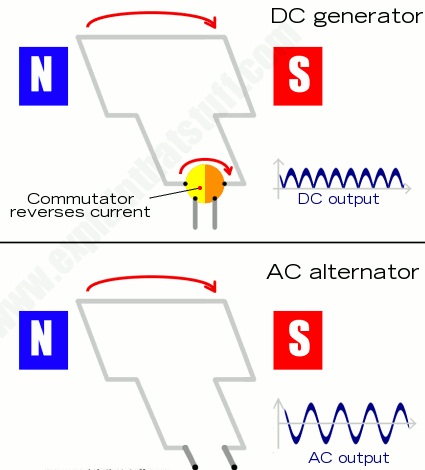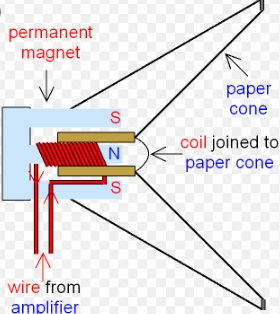They are composed of loops of current which have a magnetic effect opposing the force producing them. When a copper plate with slits is used the loops are cut off and hence the effective currents are drastically reduced and so is the opposing force.
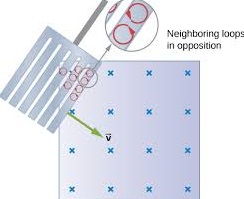
Practically eddy currents are reduced by laminating metal plates. Armatures of electric generators and motors are wound on laminated soft iron cores. The lamination slices, which are
quite thin are glued together by a non-conducting glue and this reduces eddy currents to an almost negligible value. Eddy currents are useful in moving coil meters to damp the oscillations of the armature when the current is switched off.
Mutual induction
Mutual induction is produced when two coils are placed close to each other and a changing current is passed through one of them which in turn produces an induced e.m.f in the second
coil. Therefore mutual induction occurs when a changing magnetic flux in one coil links to another coil.

Applications of mutual induction
1. The transformer - It converts an alternating voltage across one coil to a larger or smaller alternating voltage across the other. Since H.E.P is lost through transmission lines therefore it is stepped down before it being transmitted and stepped up again at the point of supply lines. In a step up transformer the number of turns in the secondary
coil (Ns) is higher than the number of turns in the primary coil (Np). In a step down transformer the primary coil has more turns than the secondary coil. The relationship
between the primary voltage and the secondary voltage is given by; Np / Ns = Vp / Vs.The efficiency of a transformer is the ratio of power in secondary coil(Ps) to power in primary coil (Pp), therefore efficiency = Ps / Pp x 100%.
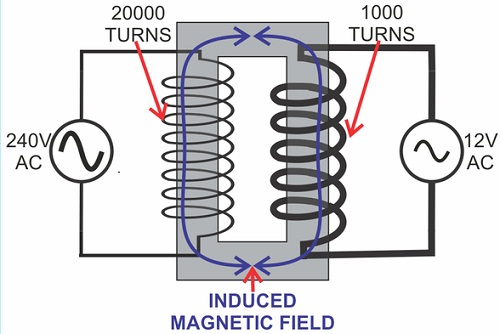 Examples
Examples
1. A current of 0.6 A is passed through a step up transformer with a primary coil of 200 turns and a current of 0.1 A is obtained in the
secondary coil. Determine the number of turns in the secondary coil and the voltage across if the primary coil is connected to a 240 V mains.
Solution
Np / Ns = Vp / Vs = Ip / Is = Ns = (0.6 × 200) / 0.1 = 1200 turns
Vp = 240 V hence Vs = (240 × 1200) / 200 = 1440 V
2. A step-up transformer has 10,000 turns in the secondary coil and 100 turns in the primary coil. An alternating current of 0.5 A flows in the primary circuit when connected to a 12.0 V a.c. supply.
a) Calculate the voltage across the secondary coil
b) If the transformer has an efficiency of 90%, what is the current in the secondary coil?
Solution
a) Vs = (Ns / Np) × Vp = (10,000 × 12) / 100 = 1200 V
b) Power in primary = Pp = Ip × Vp= 5.0 × 12 = 60 W
Efficiency = Ps / Pp × 100% but Ps = Is Vs
Is = (60 × 90) / (1200 × 100) = 0.045 A
